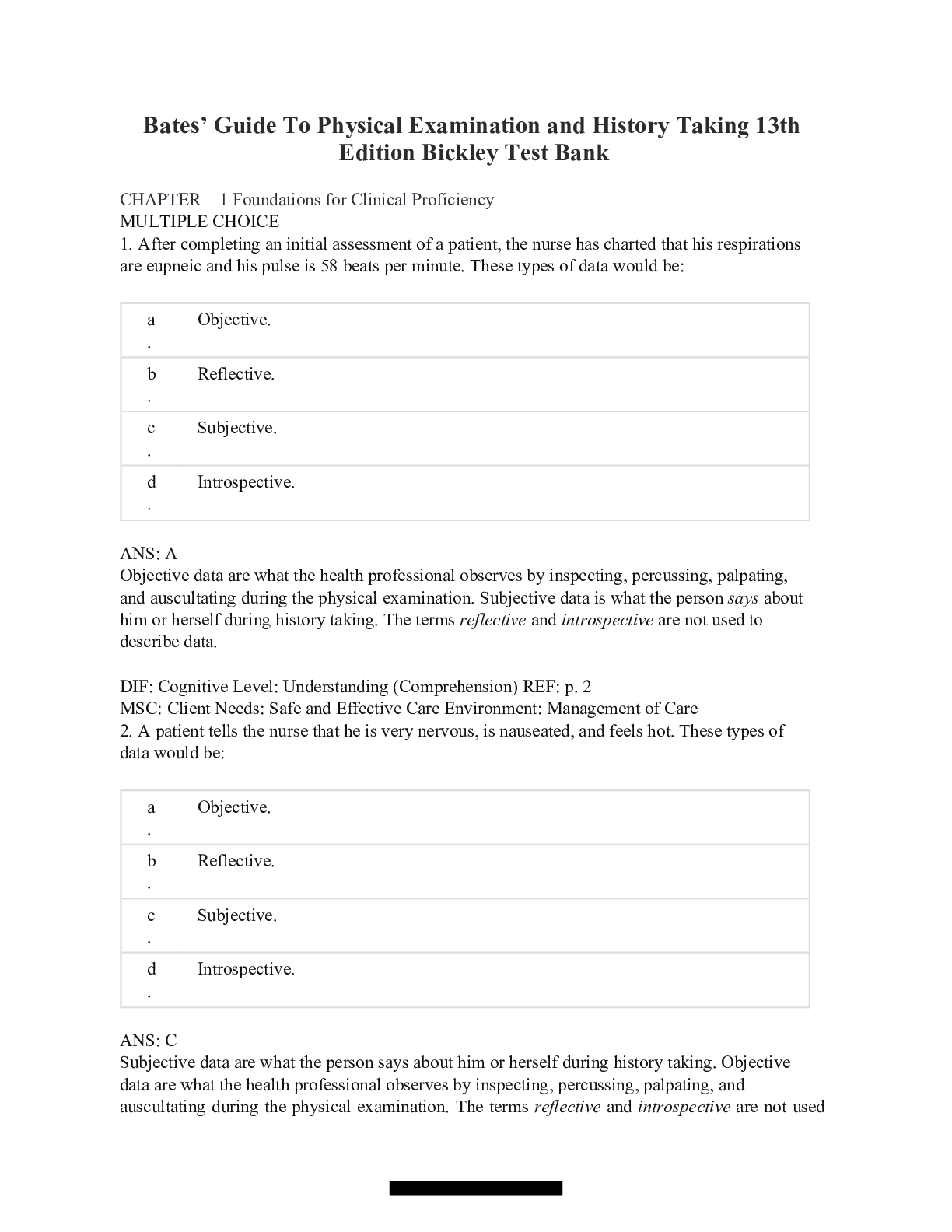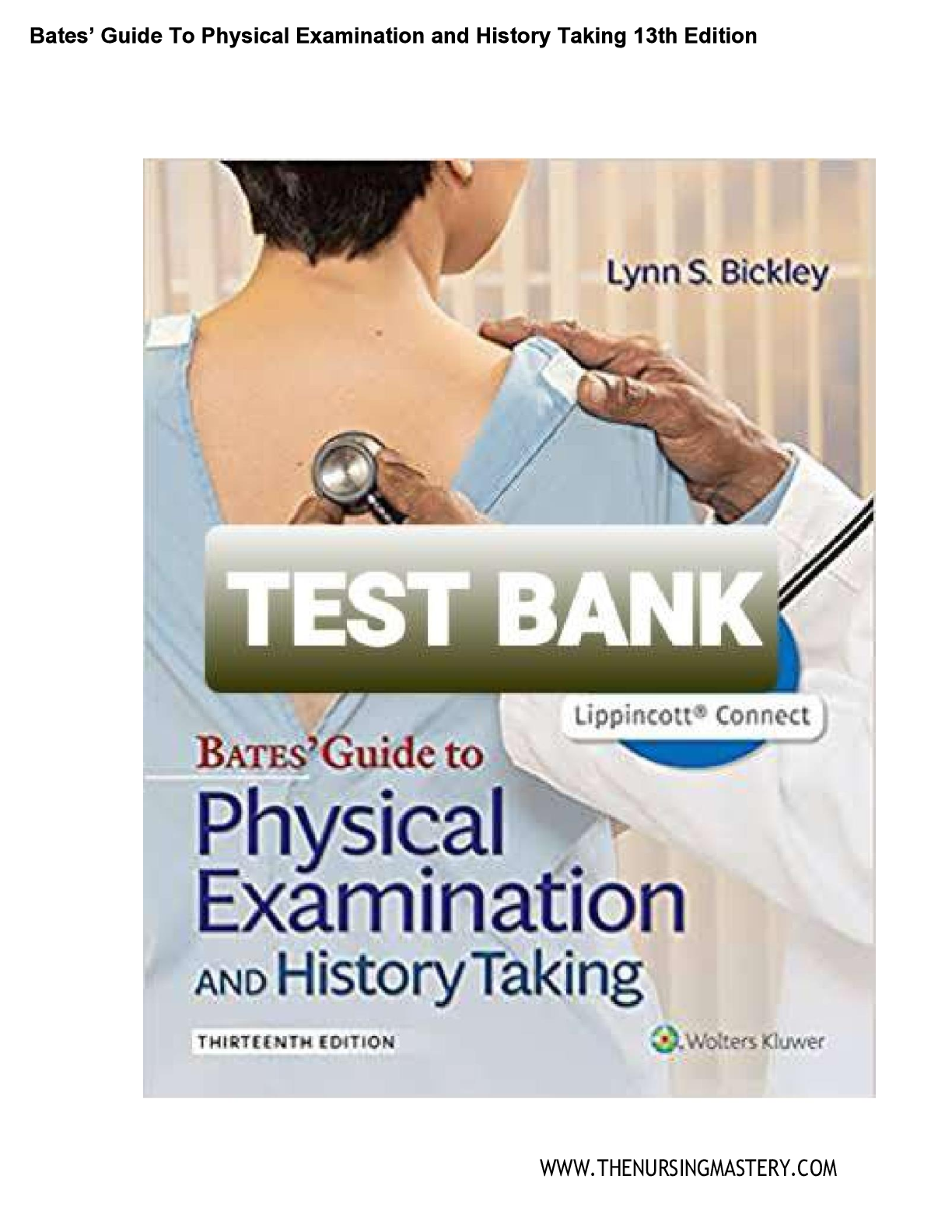*NURSING > TEST BANK > Chapter 17: The Nervous System ; Bates’ Guide to Physical Examination and History Taking, 12th Edi (All)
Chapter 17: The Nervous System ; Bates’ Guide to Physical Examination and History Taking, 12th Edition
Document Content and Description Below
Bates’ Guide to Physical Examination and History Taking, 11th Edition Chapter 17: The Nervous System Multiple Choice 1. A 28-year-old book editor comes to your clinic, complaining of strange epis... odes. He states that about once a week for the last 3 months his left hand and arm will stiffen and then start jerking. He says that after a few seconds his whole left arm and then his left leg will also start to jerk. He denies any loss of consciousness or loss of bowel or bladder control. When the symptoms resolve, his arm and leg feel tired but otherwise he feels fine. His past medical history is significant for a cyst in his brain that was removed 6 months ago. He is married and has two children. His parents are both healthy. On examination you see a scar over the right side of his head but otherwise his neurologic examination is unremarkable. What type of seizure disorder is he most likely to have? A) Generalized tonic–clonic seizure B) Generalized absence seizure C) Simple partial seizure (Jacksonian) D) Complex partial seizure Ans: C Chapter: 17 Page and Header: 718, Table 17-3 Feedback: Simple partial seizures start with a unilateral symptom, involve no loss of consciousness, and have a normal postictal state. In a Jacksonian seizure the symptoms start with one body part and “march” along the same side of the body. 2. A 7-year-old child is brought to your clinic by her mother. The mother states that her daughter is doing poorly in school because she has some kind of “ADD” (attention deficit disorder). You ask the mother what makes her think the child has ADD. The mother tells you that both at home and at school her daughter will just zone out for several seconds and lick her lips. She states it happens at least four to six times an hour. She says this has been happening for about a year. After several seconds of lip-licking her daughter seems normal again. She states her daughter has been generally healthy with just normal childhood colds and ear infections. The patient's parents are both healthy and no other family members have had these symptoms. What type of seizure disorder is she most likely to have? A) Generalized tonic–clonic seizure B) Generalized absence seizure C) Simple partial seizure (Jacksonian) D) Complex partial seizure Ans: B Chapter: 17 Page and Header: 718, Table 17-3 Feedback: In an absence seizure there is no tonic–clonic activity. There is a sudden, brief lapse of consciousness with blinking, staring, lip-smacking, or hand movements that resolve quickly to full consciousness. It is easily mistaken for daydreaming or ADD. Some will try to induce these episodes with hyperventilation. 3. A 37-year-old insurance agent comes to your office, complaining of trembling hands. She says that for the past 3 months when she tries to use her hands to fix her hair or cook they shake badly. She says she doesn't feel particularly nervous when this occurs but she worries that other people will think she has an anxiety disorder or that she's a drinker. She admits to having some recent fatigue, trouble with vision, and difficulty maintaining bladder control. Her past medical history is remarkable for hypothyroidism. Her mother has lupus and her father is healthy. She has an older brother with type 1 diabetes. She is married and has three children. She denies tobacco, alcohol, or drug use. On examination, when she tries to reach for a pencil to fill out the health form she has obvious tremors in her dominant hand. What type of tremor is she most likely to have? A) Resting tremor B) Postural tremor C) Intention tremor Ans: C Chapter: 17 Page and Header: 720, Table 17-4 Feedback: Intention tremors are absent at rest or in a postural position and occur only with intentional movement of the hands. This is seen in cerebellar disease (stroke or alcohol use) or in multiple sclerosis. This patient's tremor, fatigue, bladder problems, and visual problems are suggestive of multiple sclerosis. 4. A 77-year-old retired school superintendent comes to your office, complaining of unsteady hands. He says that for the past 6 months, when his hands are resting in his lap they shake uncontrollably. He says when he holds them out in front of his body the shaking diminishes, and when he uses his hands the shaking is also better. He also complains of some difficulty getting up out of his chair and walking around. He d [Show More]
Last updated: 1 year ago
Preview 1 out of 13 pages
Instant download
.png)
Instant download
Reviews( 0 )
Document information
Connected school, study & course
About the document
Uploaded On
May 06, 2022
Number of pages
13
Written in
Additional information
This document has been written for:
Uploaded
May 06, 2022
Downloads
0
Views
118


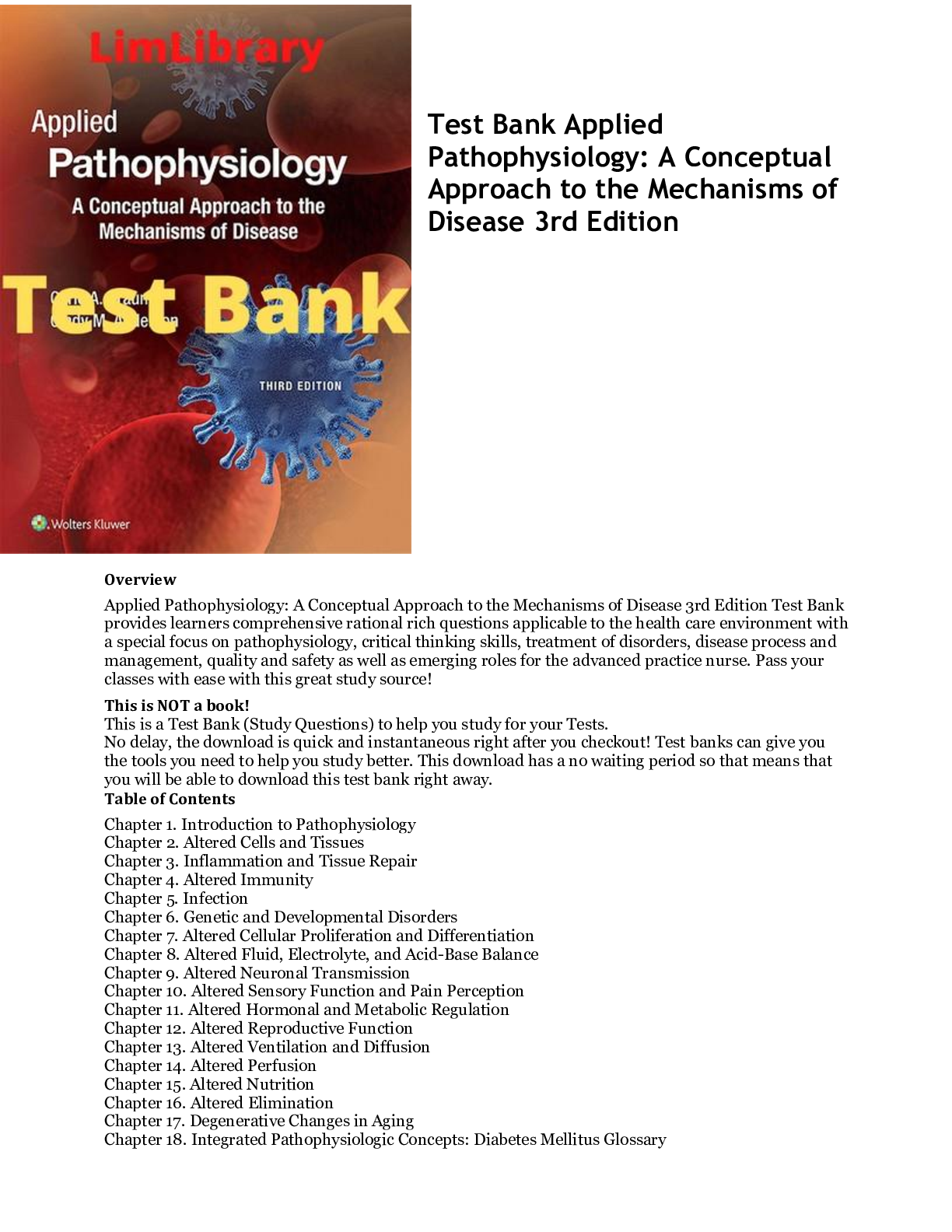

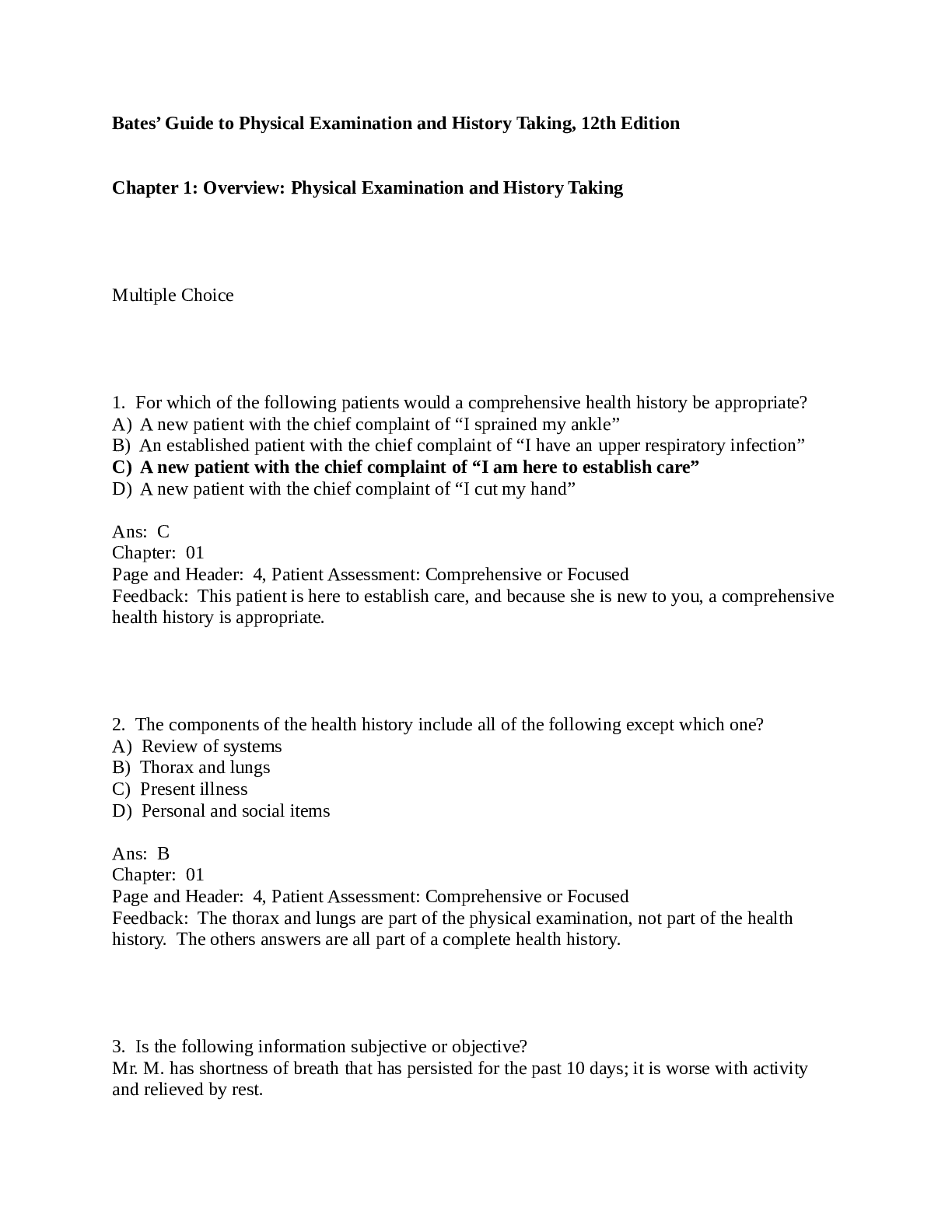
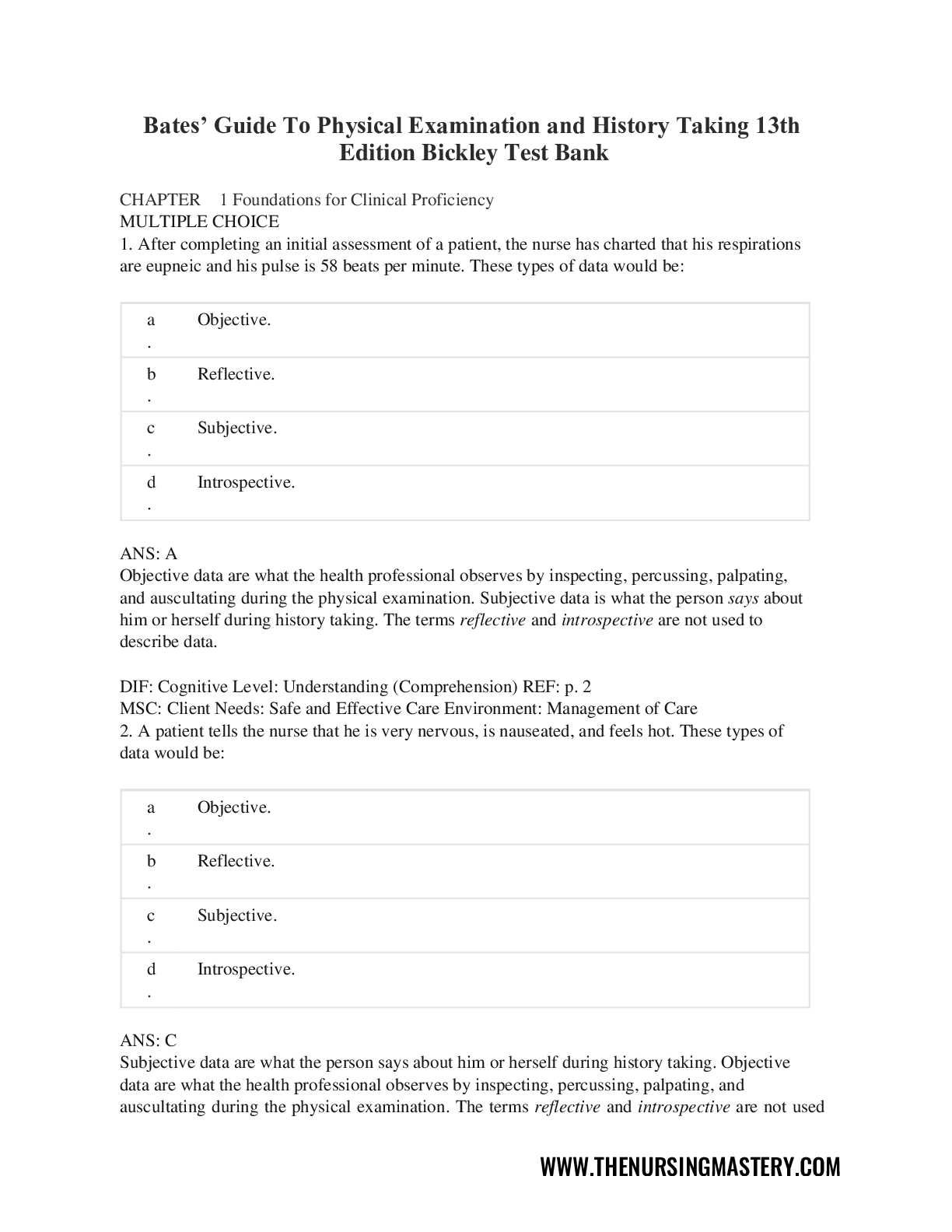
.png)
.png)
.png)

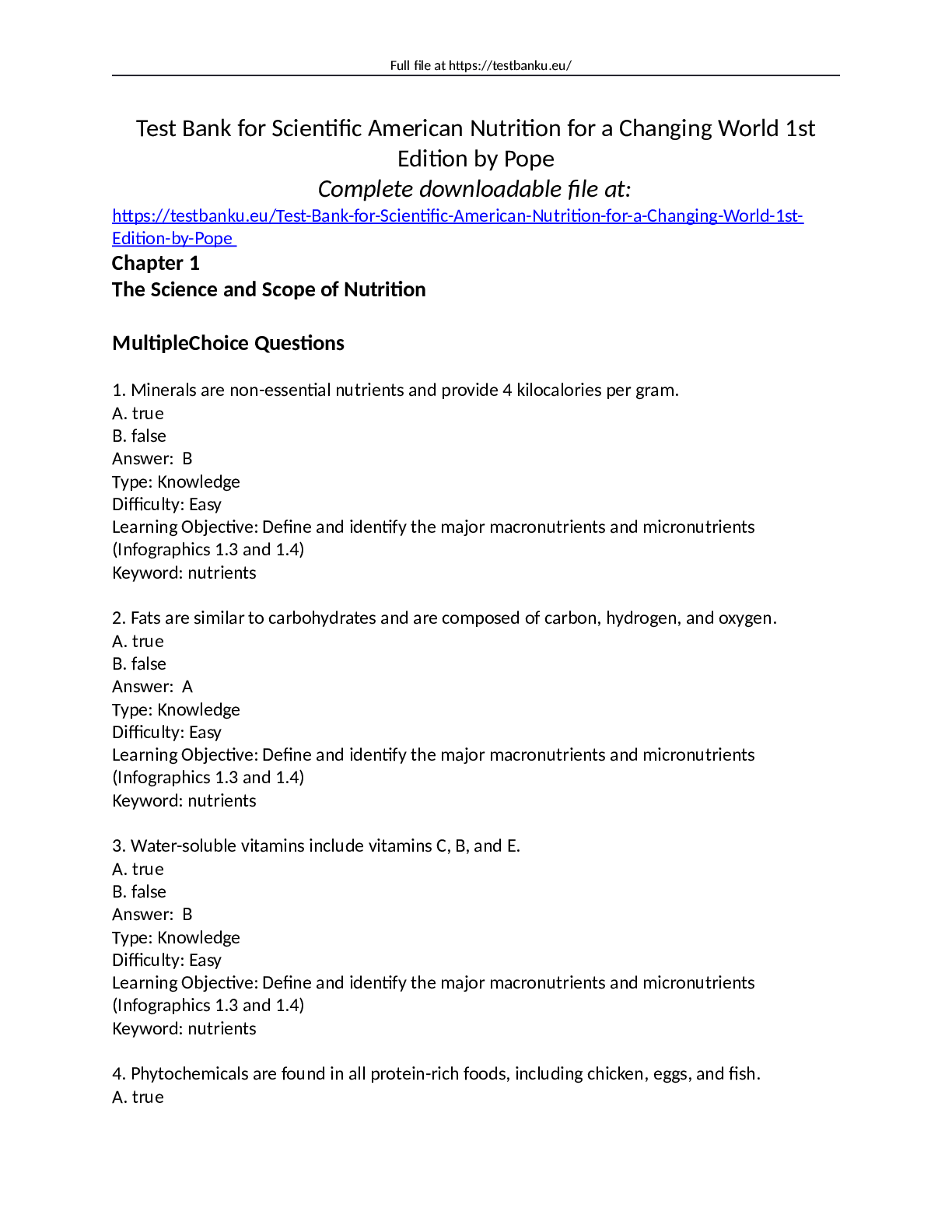
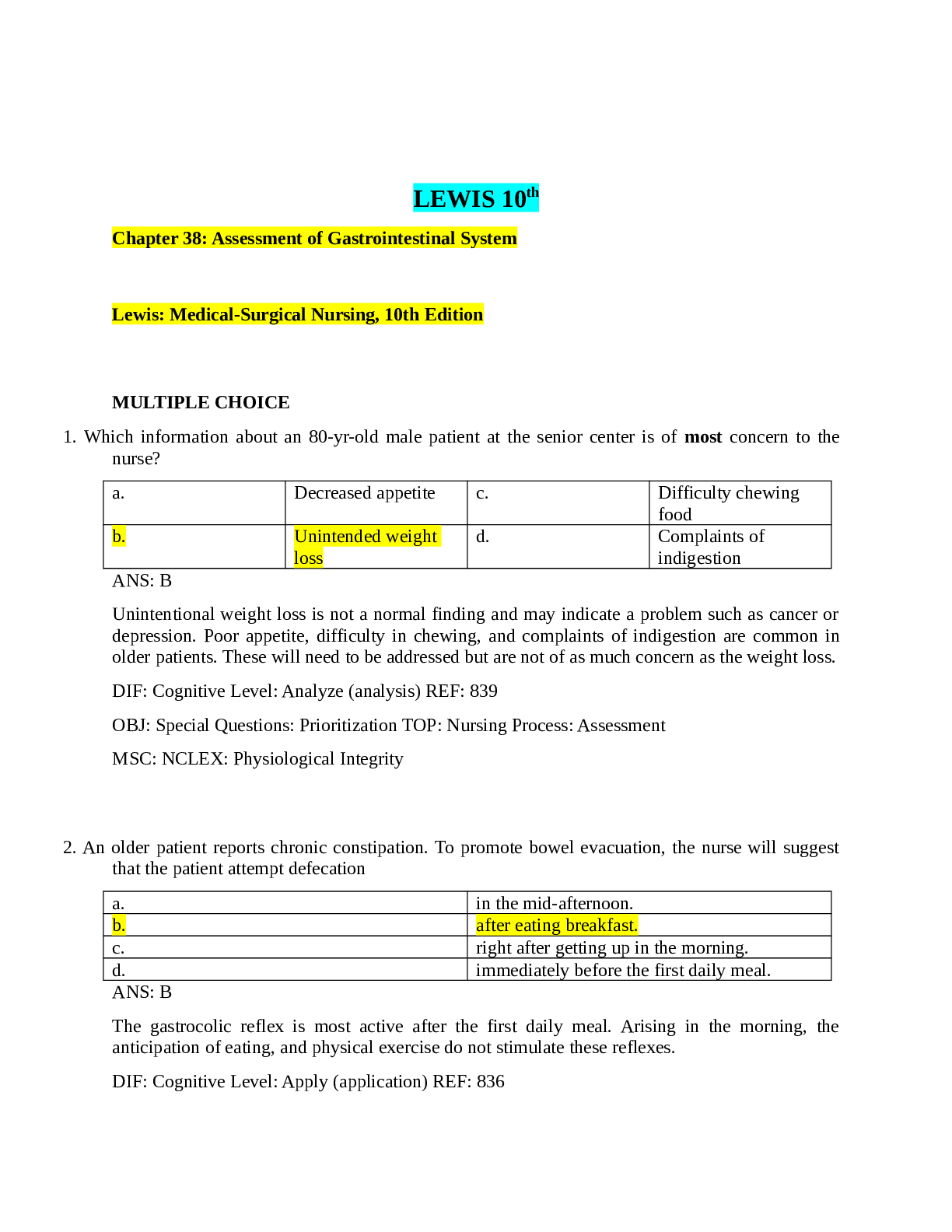

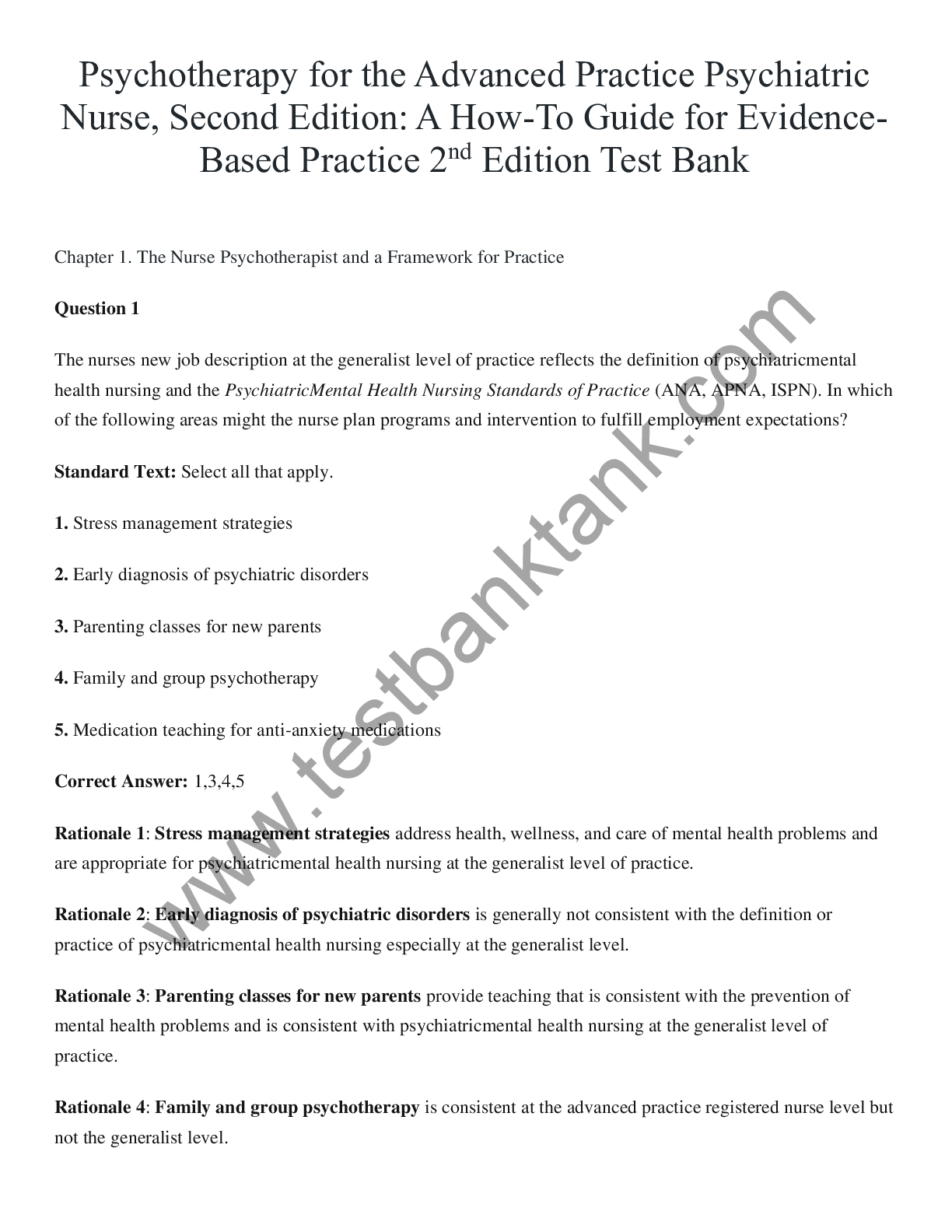
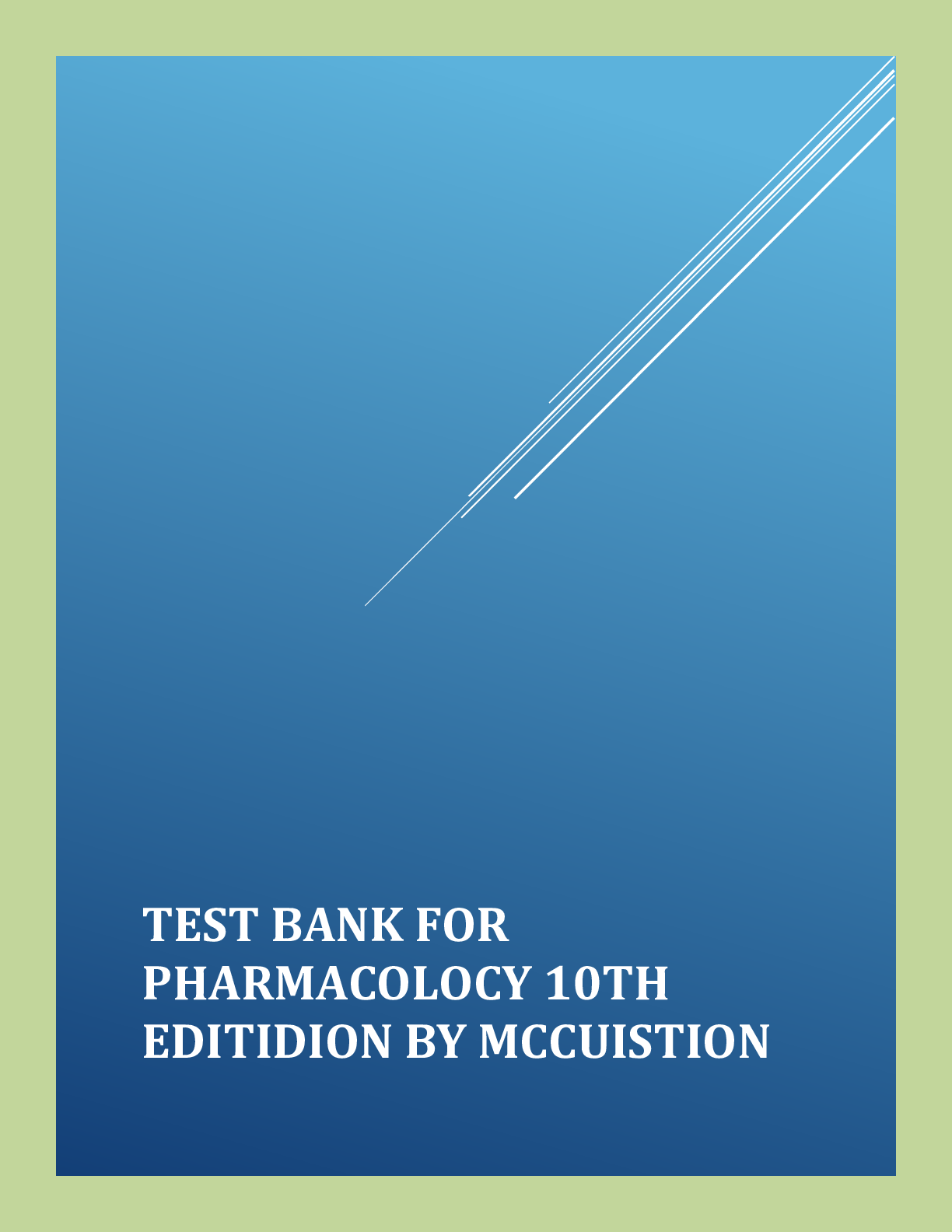
.png)





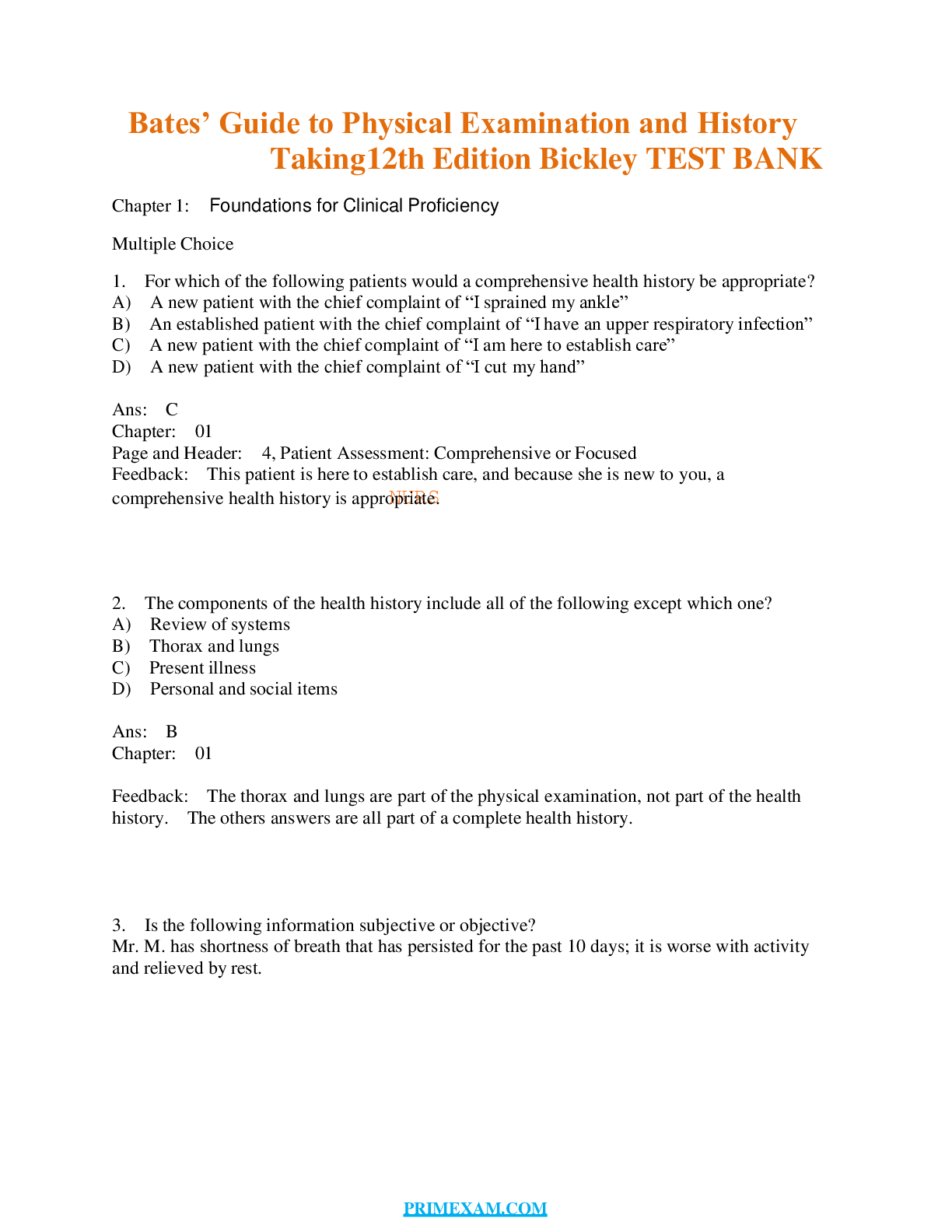
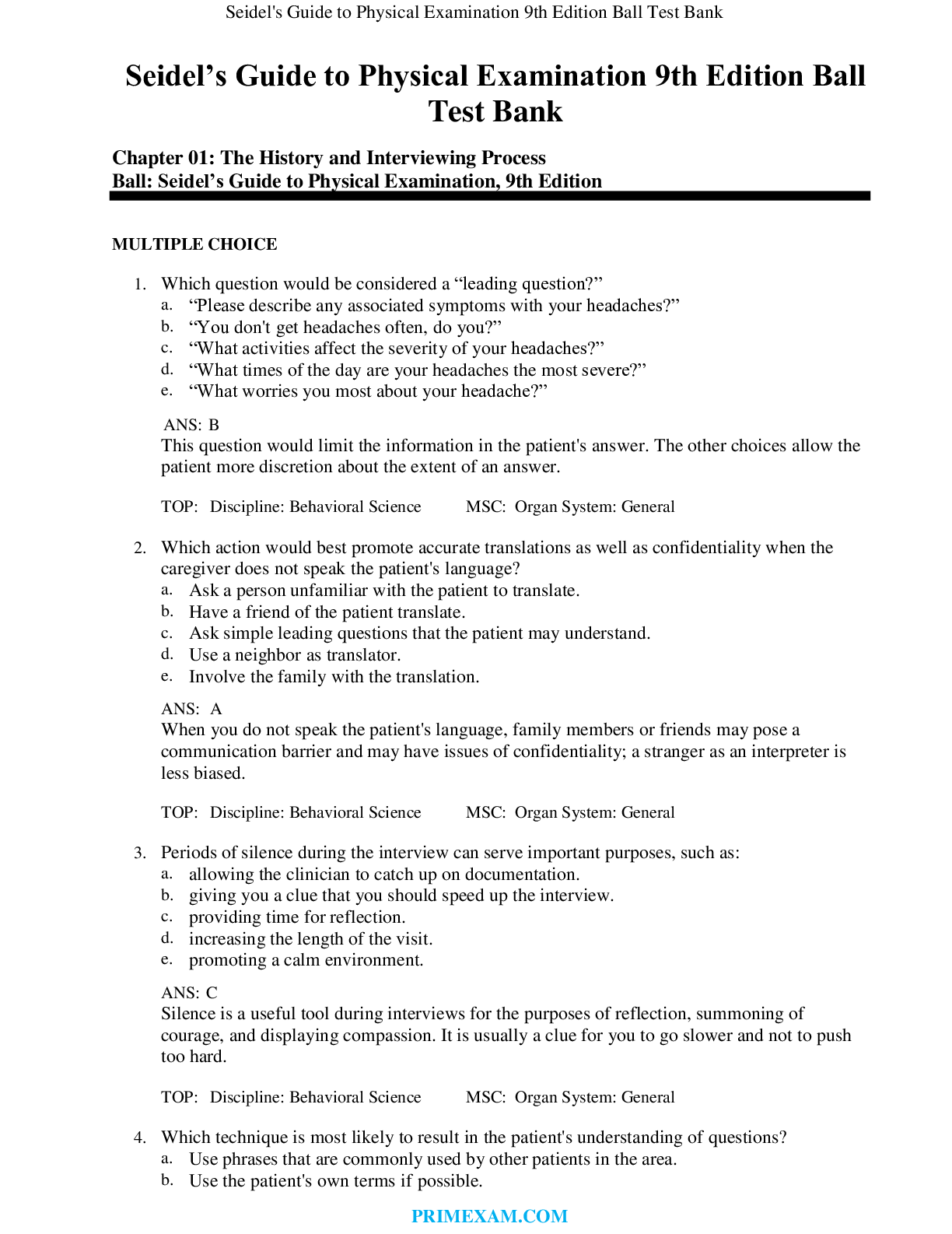

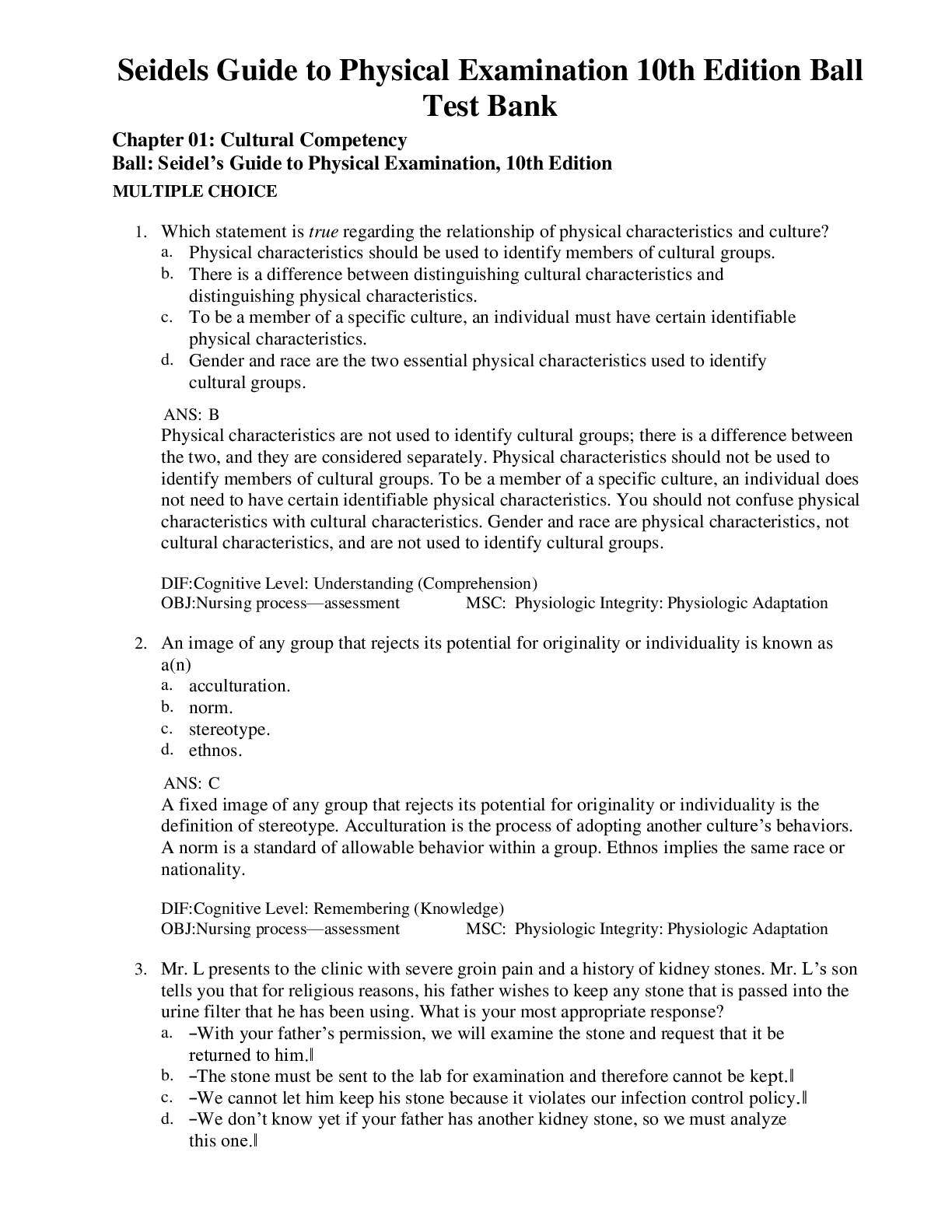
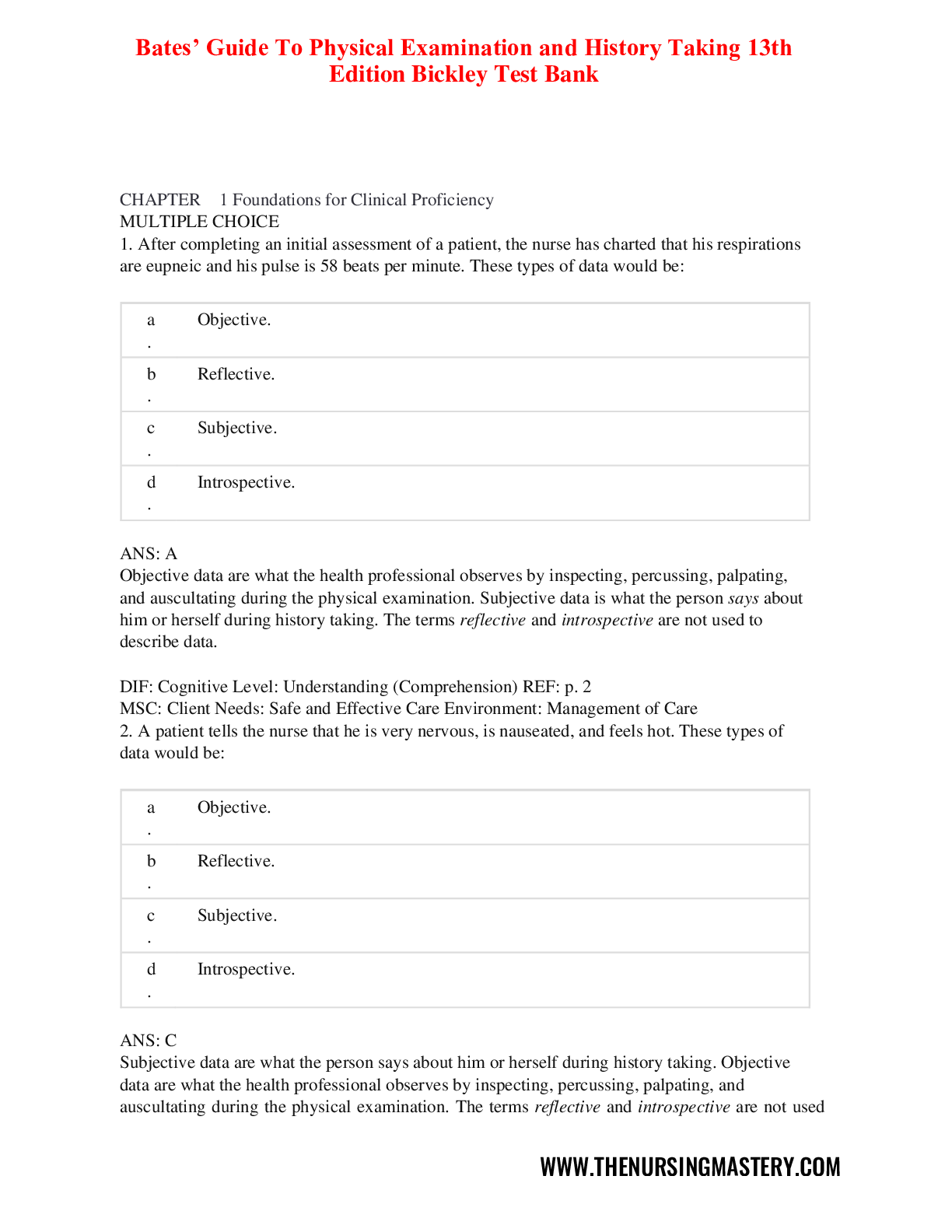

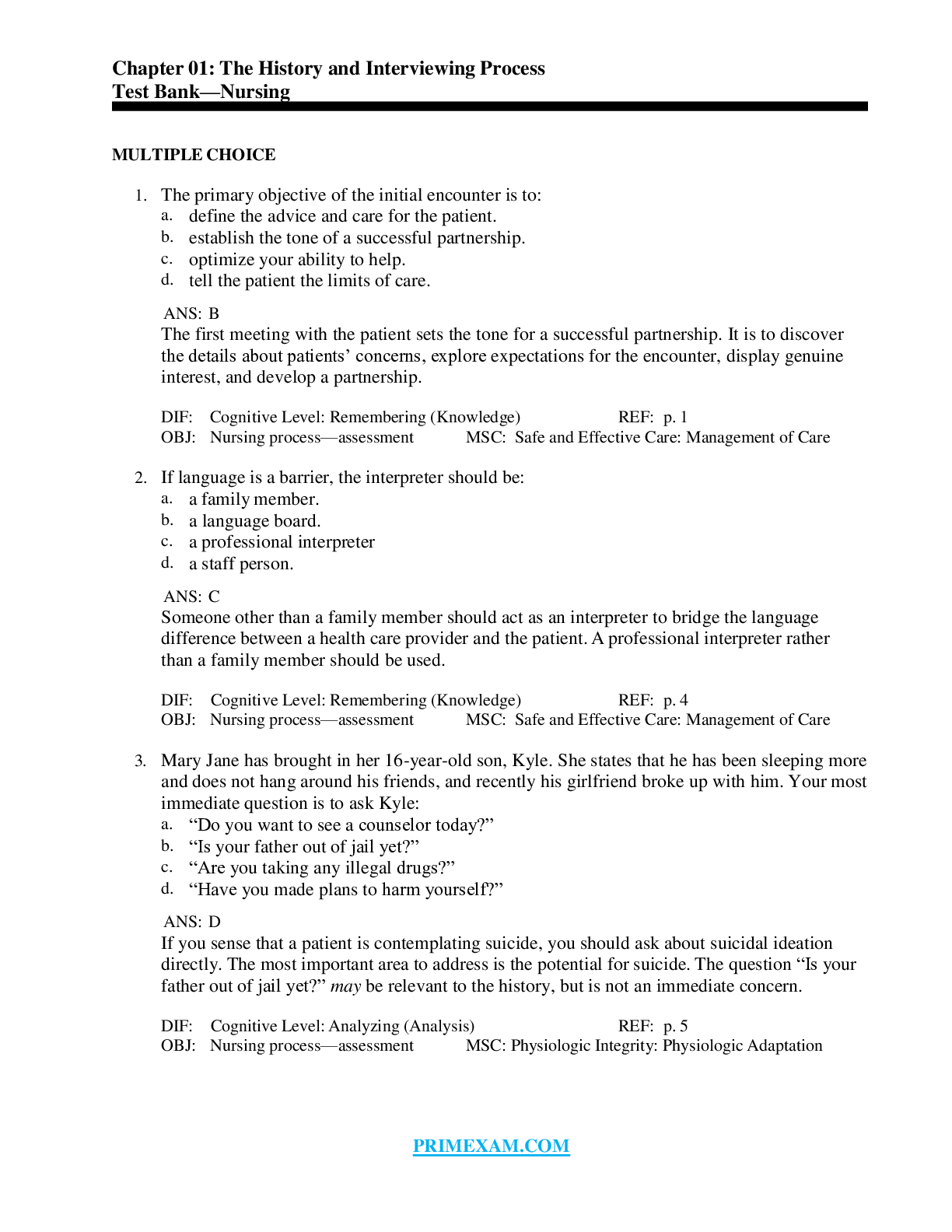
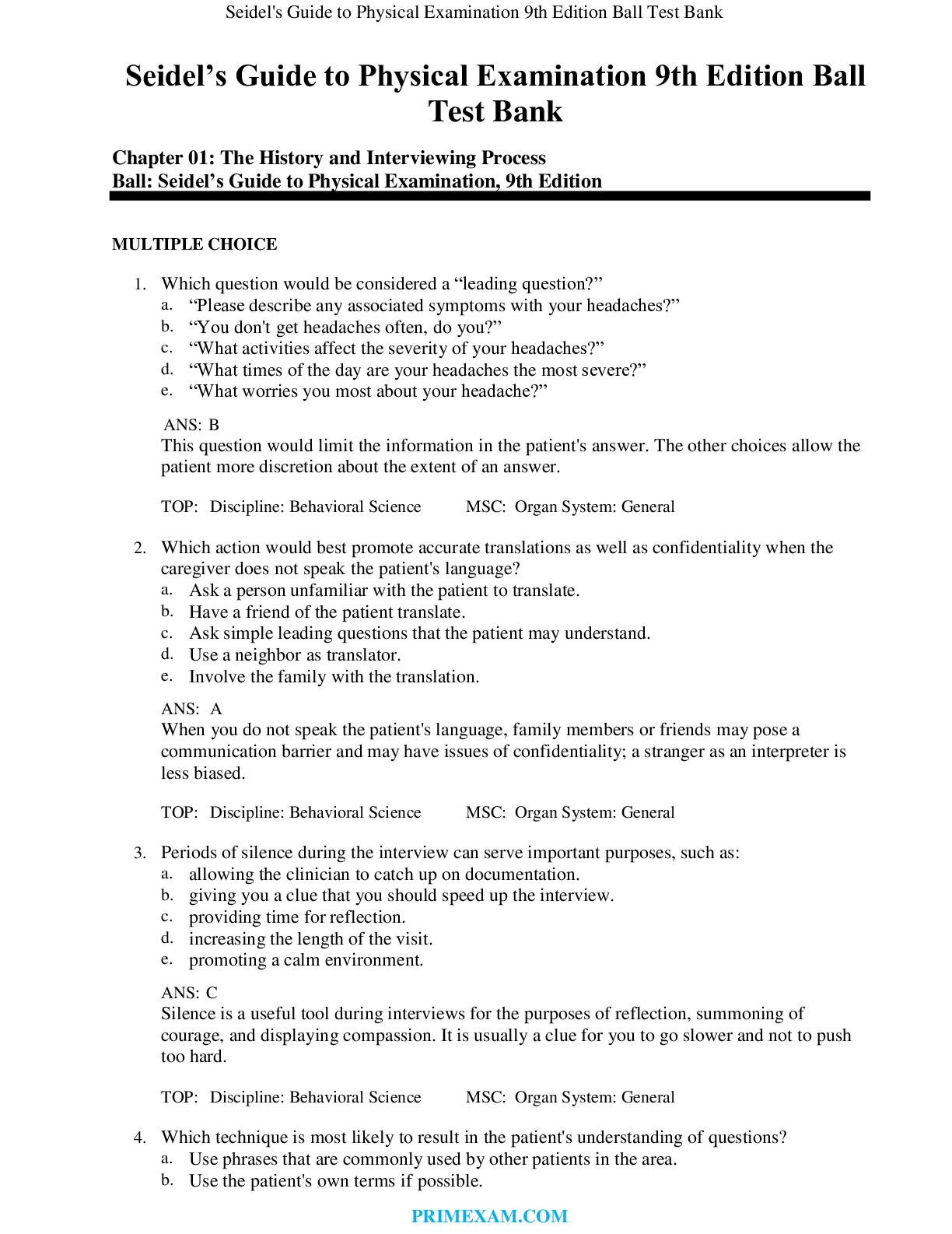
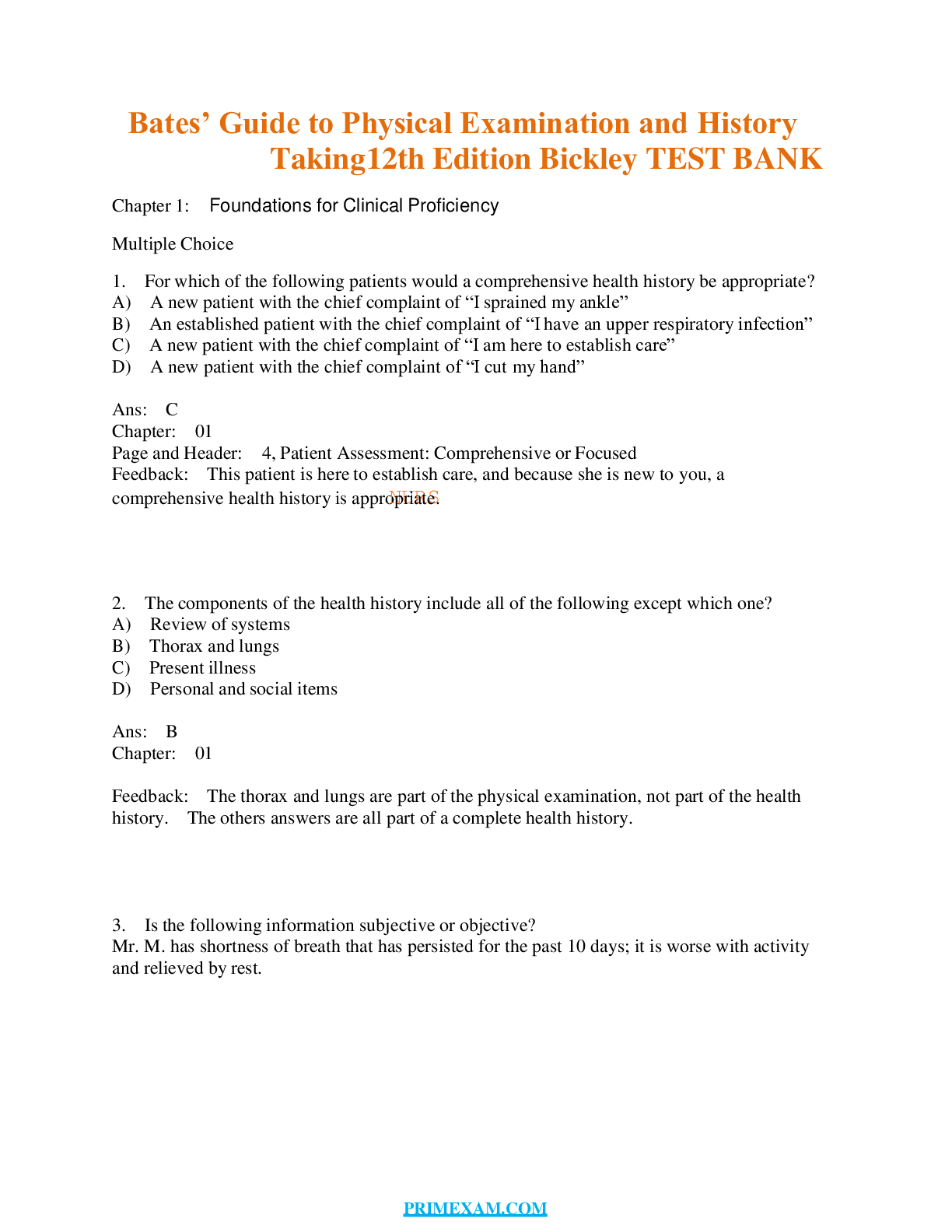



.png)
